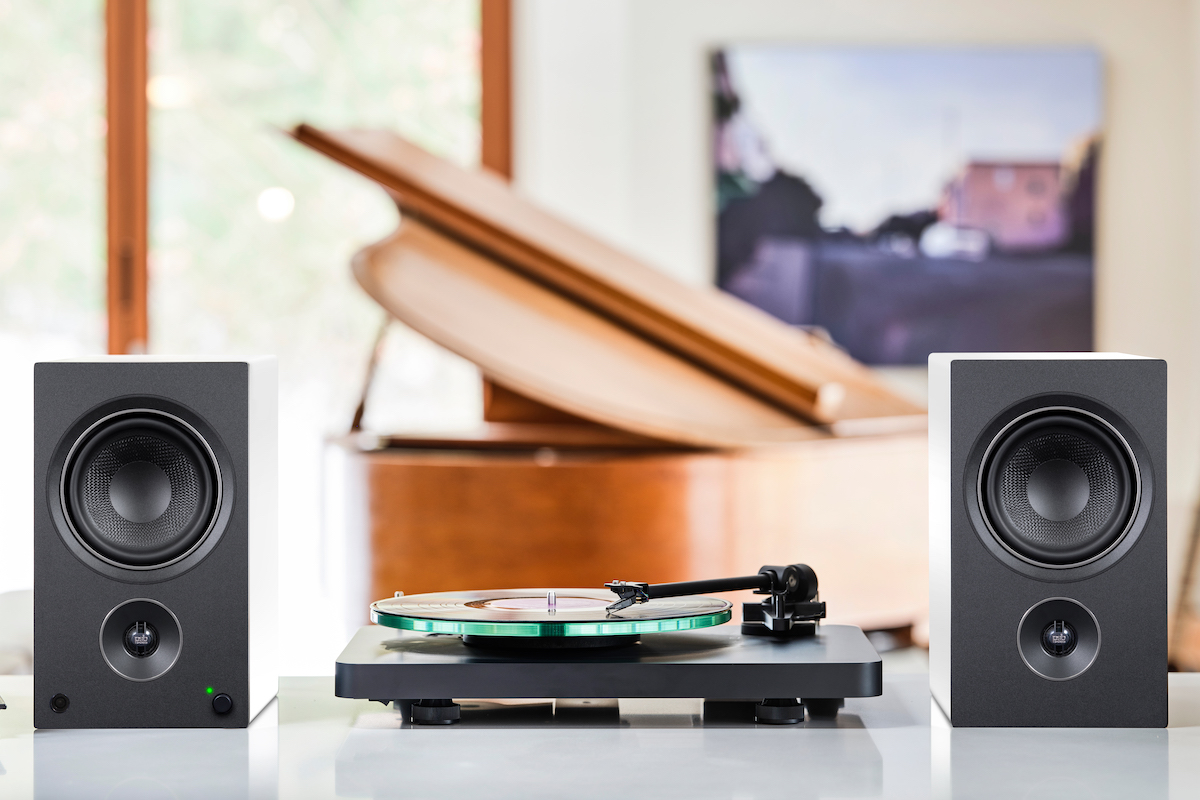It sounds like a nice problem for a speaker maker to have: Some hot new models are launched, and the first batch immediately sells out. That’s what happened when PSB announced powered versions of its acclaimed Alpha P3 and Alpha P5 minimonitors.
Like the Alpha P3, the new Alpha AM3 ($399/pair, all prices USD) has a 4” woofer with textured polypropylene cone and a 0.75” aluminum-dome tweeter; the right speaker houses a 35Wpc amplifier that powers both speakers. Like the Alpha P5, the Alpha AM5 ($599/pair) has a 5.25” woofer and a 0.75” dome; it’s powered by a 50Wpc amp. Both models have a built-in phono stage, a USB DAC, analog (3.5mm mini) and digital (TosLink) inputs, and a subwoofer output.
As soon as I read PSB’s announcement of the Alphas, I fired off an e-mail to their media-relations representative, requesting a review sample of the Alpha AM5. Forty minutes later, I received a reply from the affable Peter Hoagland: “I am told samples will be available soon. Do you have a color preference?”
There was a reason for my alacrity. The Alpha P5 was enthusiastically reviewed on SoundStage! Access by Hans Wetzel in April 2019, when it received a Reviewers’ Choice Award. Subsequently, the P5 was named a Recommended Reference Component on SoundStage! Hi-Fi, and received a SoundStage! Network 2019 Product of the Year award for Outstanding Value. The Alpha AM5 seemed a perfect fit for SoundStage! Simplifi.
Imagine my disappointment when, one week later, I received a follow-up e-mail from Hoagland: “Lenbrook [PSB’s parent company] is backordered on the AM5 and will have no samples for review.” Apparently, dealer demand for the powered Alphas has been through the roof, and the first production run, limited and delayed by the COVID-19 pandemic, had sold out almost immediately. Fortunately, Lenbrook can provide me with samples of the Alpha AM3 -- look for that review on Simplifi December 1.
As Hoagland explained, the situation is bittersweet for Lenbrook: There’s clearly pent-up demand for these speakers, a demand the company can’t immediately fulfill. Will that demand persist into 2021, when shipments ramp up?
The time has come
There’s a point to that long-winded introduction. For years, people have been wondering when speakers with built-in amplification would become part of mainstream audio. The out-of-the-gate demand for PSB’s two new powered models clearly shows that that time has come.
I suspect Lenbrook knew it had a hit on its hands with the Alpha AM3 and AM5. In a phone interview a few days after the announcement, PSB founder and chief designer Paul Barton told me that powered versions of the Alpha P3 and P5 “were part of the roadmap right from the start.” He confirmed that the passive and powered models have the same drivers, crossovers, and enclosure designs. “The platform didn’t change,” he said.
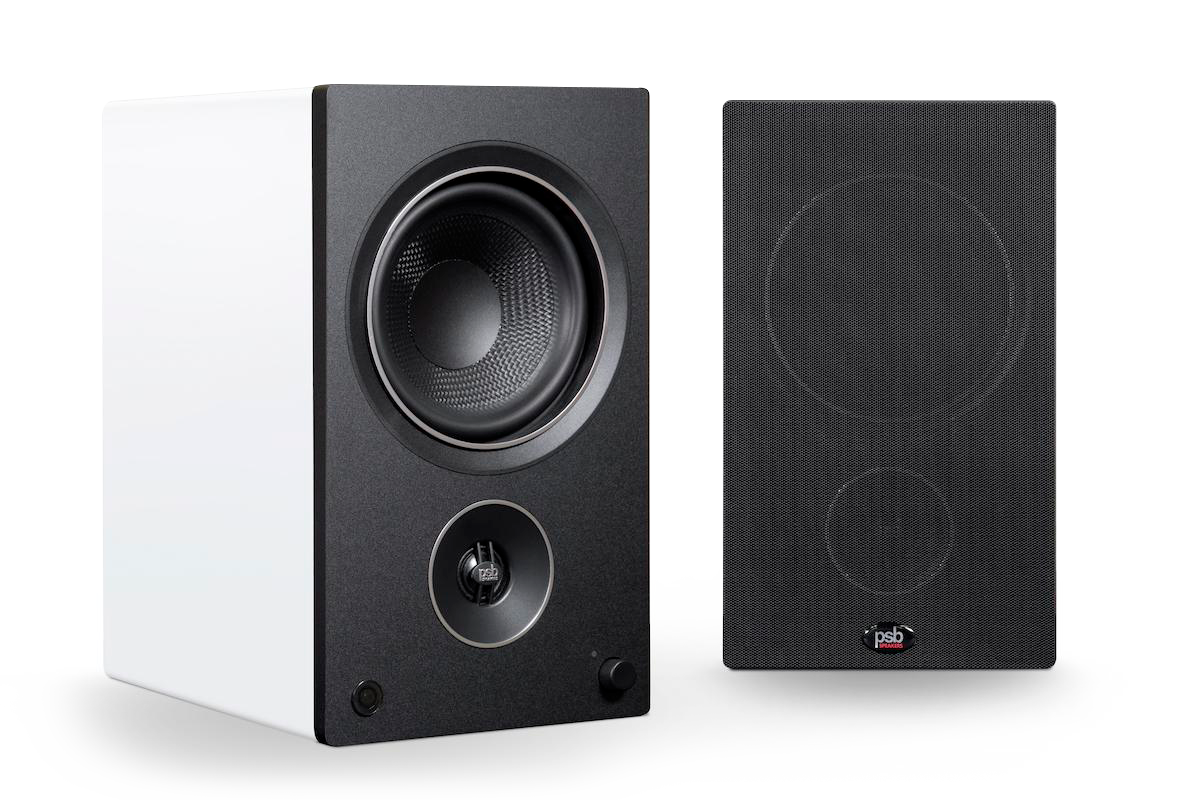
Compared to a conventional component system comprising passive speakers and separate amplification, powered and active speakers have some big advantages. “It’s a closed system,” Barton observed, “so it’s much more optimized than an open system.” An amplifier designed to be used as part of a system of separate components must be able to work with a wide range of loudspeakers. In an active or powered speaker, the amplifier(s) can be tailored to work optimally with that specific speaker design.
Powered and active speakers also deliver greater value than passive component systems, Barton added, and address consumers’ desire for greater simplicity and less clutter.
Well, yes and no: In many respects, assembling a music system around powered or active speakers is simpler than putting together a traditional component system. The buyer doesn’t have to match speakers and amplifiers -- the designer has already done that. But in other respects, the decision is more complicated. If you’re buying a DSP-powered active speaker with built-in networking and streaming, you’re making a whole bunch of decisions in one go -- speakers, amplification, connectivity, and a key source component (the streamer).
If you’re thinking of speakers with built-in amplification, here are some of the decisions you’ll face, and the tradeoffs involved.
Powered vs. active
As I’ve noted repeatedly on this site, speakers with built-in amplifiers fall into two broad categories. According to the definitions used across all SoundStage! websites, powered speakers use a single amplifier for each channel. They have passive crossover networks, just like conventional speakers, and these come after the amplifier in the signal path. In active speakers, the crossover comes before the amplifier in the signal path. The crossover feeds dedicated amplifiers for each frequency band.
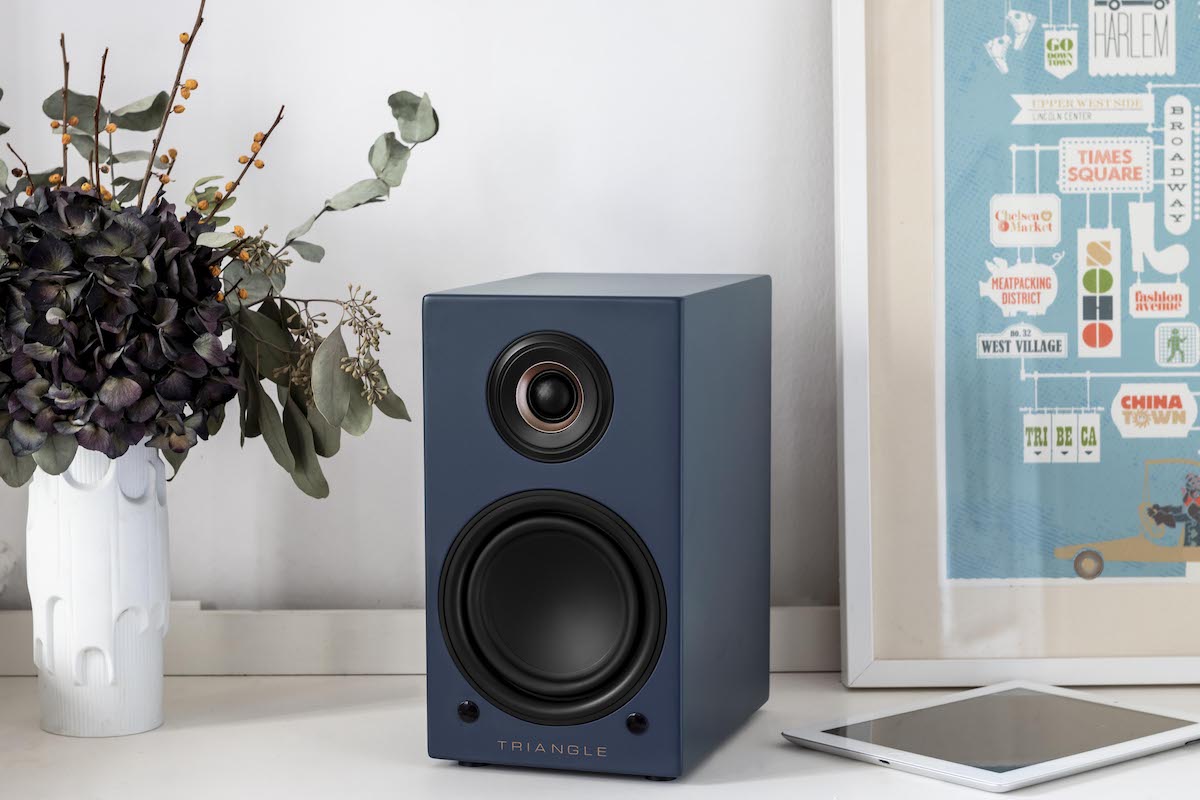
Powered speakers are almost always sold in pairs. The primary speaker usually houses the amplifiers for both channels, as well as the jack panel for connecting external components. The secondary speaker is typically a conventional passive design. The two speakers are connected with regular speaker cable, sometimes terminated with proprietary connectors. I’ve reviewed three powered speakers for Simplifi, from Kanto Audio, Totem Acoustic, and Triangle Manufacture Electoacoustique (whose Elara LN01A speakers are shown above).
Most powered speakers are priced under $1000/pair, but a few companies, such as Canada’s Axiom and Bryston, and Switzerland’s Piega, make costlier ranges of powered speakers that include minimonitors and floorstanders. These models work with companion wireless transmitters with input jacks for external components such as streamers and disc players. And there are a few active speakers for under $1000/pair, such as Klipsch’s The Fives ($799/pair, shown below).
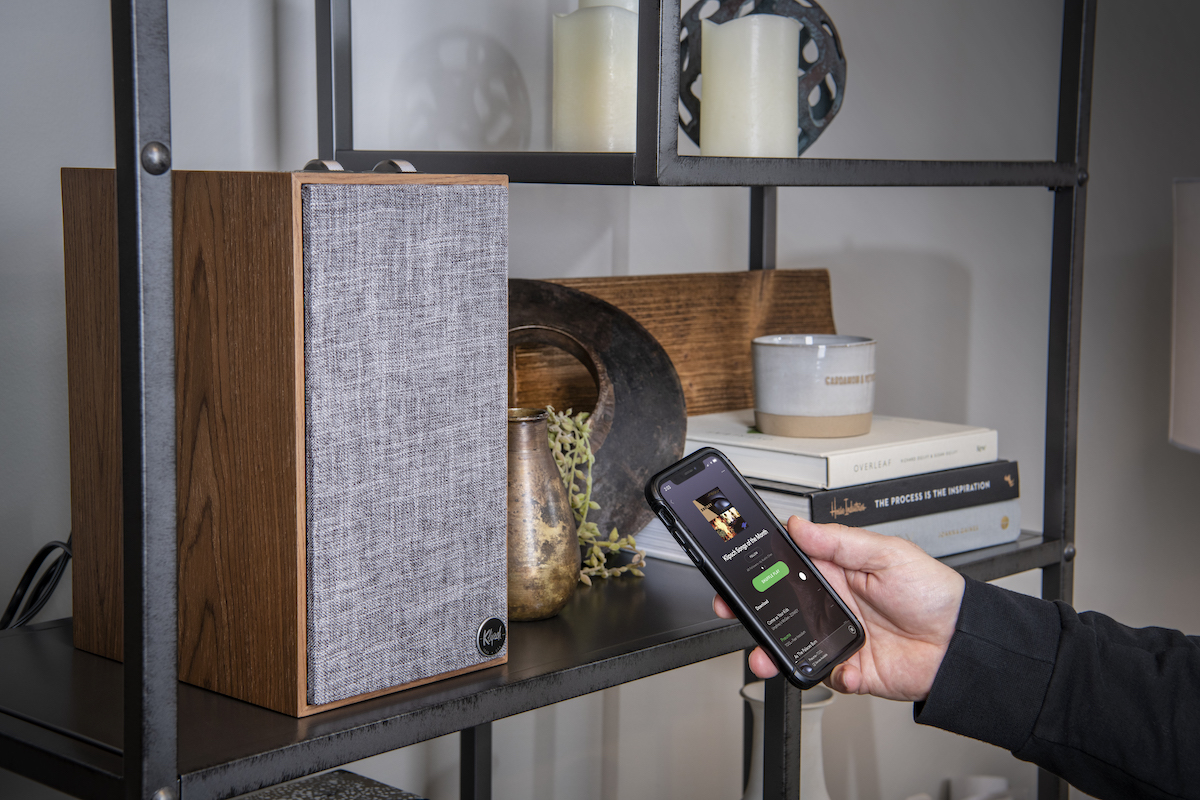
For a given price, which is the better way to go: powered or active? There’s no easy answer to that question -- speaker makers tend to take one approach or the other. Powered speakers are easier to make because, essentially, they’re the same as passive models, except that they have a stereo amp built into one enclosure. That makes the learning curve much less steep than it is with active designs.
But active speakers have undeniable advantages. Because there are no passive crossover components between the amp’s output and the speaker’s drivers, dynamics are usually better. Designers can choose the amplifier best suited for each frequency band, and because each band has its own dedicated amp, the power demanded by one band won’t affect the other bands. If you’re playing loud, bass-heavy music through powered speakers, high power demands could cause congestion higher in the audioband. With active speakers, each higher-frequency band will have its own amp, so this won’t be a problem.
Analog active vs. digital active
Most active speakers aimed at the home hi-fi market implement the crossover in digital signal processing (DSP), but a few models have analog crossovers based on op-amps. The latter include Elac’s stand-mounted Navis ARB-51 ($2299.98/pair) and floorstanding Navis ARF-51 ($4599.96/pair), both of which won Reviewers’ Choice awards when I reviewed them on Simplifi in 2019. The ARB-51 also won a SoundStage! Network Product of the Year award for outstanding value.
Analog active speakers are common in the professional market. I’ve reviewed several of these products for Simplifi, including Focal’s Shape 65 ($1998/pair), HEDD’s Type 07 ($1700/pair), and PMC’s result6 ($2950/pair). As my reviews document, monitors designed for the recording studio can also work very well for home listening. The Focal Shape 65 (shown below) received a Reviewers’ Choice award when I reviewed it for Simplifi, and was later named a Recommended Reference Component on SoundStage! Hi-Fi.
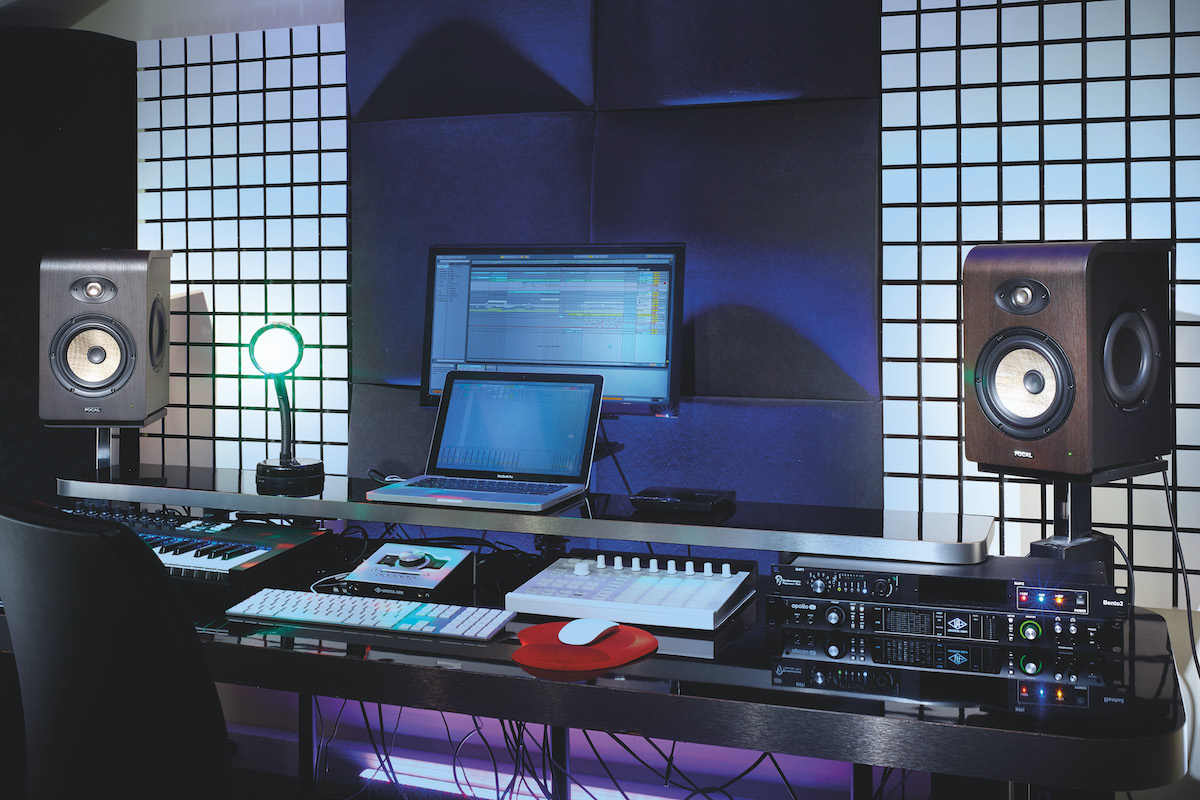
Analog active speakers provide more flexibility for listeners who want to choose their own DACs and streamers. DSP-based active speakers digitize analog signals before sending them to the DSP and amplifier stages. If you use an external DAC with such a speaker, the signal is subjected to additional digital-to-analog and analog-to-digital conversions, which isn’t ideal. That’s one of the reasons I chose Elac’s Navis ARF-51s as my reference active speakers: I wanted to use them as a test bed for reviews of such products as streaming DAC-preamps, and I didn’t want a DSP-based active speaker redigitizing these products’ analog outputs.
Many analog active speakers have controls for compensating for less-than-ideal placement. Elac’s Navis speakers have three-position switches for setting the outputs of the lows, mids, and highs. HEDD’s Type 07 and Focal’s Shape 65 have dials for setting the low- and high-frequency shelving.
Similar features are offered on some digital active loudspeakers. Like all models in its Focus XD series, Dynaudio’s Focus 20 XD speakers ($5999/pair in standard finishes) have rear-panel dials that let you tailor their output for placement in the open, near a wall, or in a corner. KEF’s LSX ($1100/pair) and new LS50 Wireless II ($2499.99/pair, shown below) active speakers let you specify the speaker positions in their companion apps, and their DSPs tailor the sound accordingly.
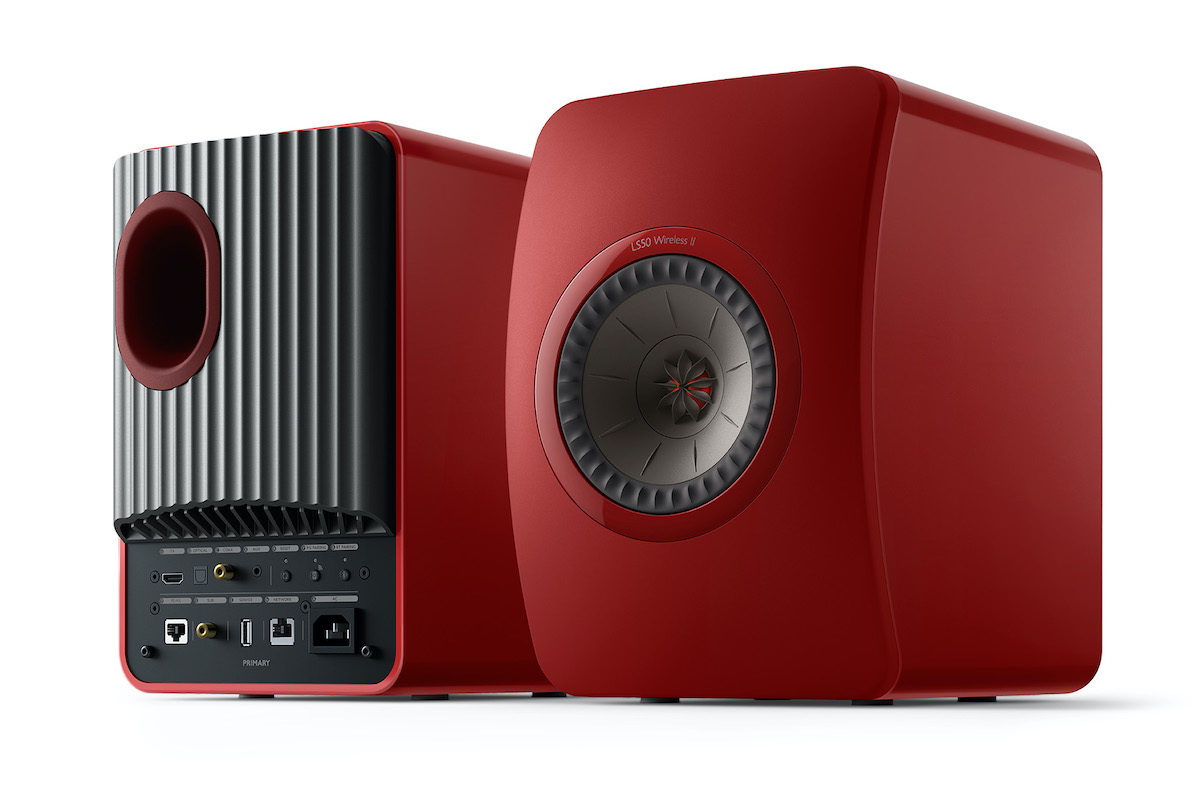
DSP-based active speakers have some fundamental advantages over analog designs. With a DSP crossover, the designer can correct the timing of the drivers’ outputs far more easily than with an analog crossover. Designers can also use DSP to smoothen irregularities in the speaker’s response.
DSP -- the new frontier
To my mind, DSP-based digital active speakers are one of the most exciting areas of audio right now, and one in which European and UK brands are ahead of their North American counterparts -- though that could soon change.
Using DSP, designers can create speakers that adapt to real-world applications in a way that analog designs cannot. Like many DSP-based active speakers, KEF’s LSX and LS50 Wireless II perform dynamic equalization in DSP. They adjust their bass output in real time to maximize bass extension and minimize distortion for the current volume setting. This lets them achieve much deeper bass than their small cabinets would lead you to expect.
One speaker that does this to stunning effect is Buchardt Audio’s A500 ($4150/pair in standard finishes, including shipping and all duties and taxes). Buchardt specifies the frequency response of this stand-mounted active speaker as 25Hz-40kHz, ±1.5dB. My listening gave me no reason to doubt that claim -- these speakers deliver prodigious bass. The A500 uses DSP to enable other slick features -- such as Mastertunings, which allows the listener to optimize the speakers’ response and crossover characteristics for different applications and program content.
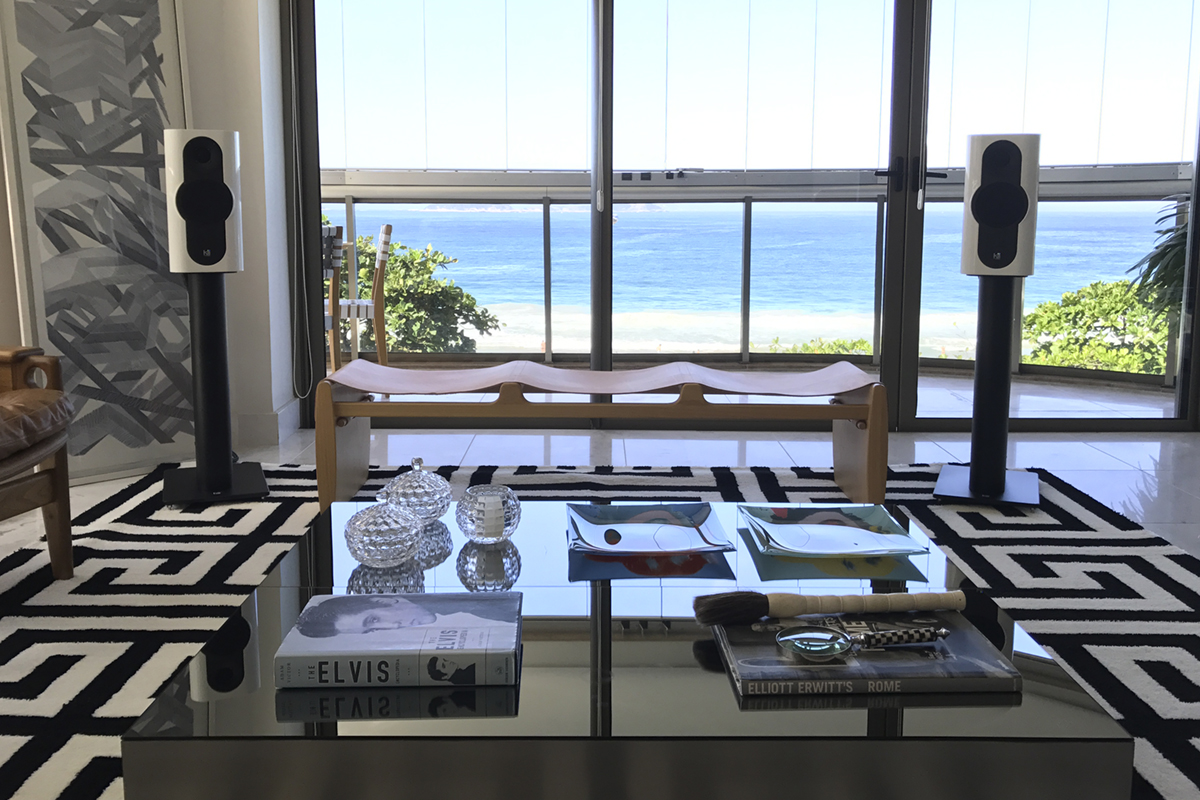
In my view, the poster child for DSP-based digital active loudspeakers is Kii Audio’s Three ($16,995/pair, including Kii Connect module), which uses DSP to achieve a consistent cardioid radiating pattern at all frequencies, vastly reducing the effects of the listening room on the sound. According to Kii, the Threes produce “a completely coherent wavefront that is only emitted forward, and behaves as if all of it came from the midrange driver.” In addition to winning a Reviewers’ Choice award, the Kii Three received a 2018 SoundStage! Network Product of the Year award for Pioneering Design Achievement.
DSP can be used in powered speakers as well. In PSB’s new Alpha AM3 and AM5, DSP is implemented after the input (analog signals are first digitized) and before the stereo amplifier. According to Paul Barton, the new Alphas use DSP to deepen perceived bass response without increasing distortion. There are optional settings for enhancing dialog, widening the soundstage, and improving the bass response.
Connectivity and wireless capability
One area in which powered and passive speakers greatly vary is connectivity options. Most pairs of powered speakers, and a few active models, have jack panels on the back of one speaker for connecting external components. All the models I’ve reviewed have had built-in moving-magnet phono stages, TosLink digital and line-level analog inputs, and Bluetooth.
Many powered loudspeakers and some active speakers also have subwoofer output jacks, but these vary in what they do. On some speakers, such as Triangle’s Elara LN01A ($859/pair), the sub output is actually a line-level output jack that outputs full-range audio -- you have to enable a low-pass filter in the sub itself. On other models, including the Kanto Tuk ($799.99/pair), connecting a sub engages a low-pass filter for the sub and a high-pass filter for the main speakers. The app that accompanies KEF’s LSX and LS50 Wireless II active speakers lets you implement a low-pass filter for the sub and a high-pass filter for the main speakers, as well as set the crossover frequency. Having a high-pass filter means that the main speakers don’t have to produce deep bass, which translates to better definition in the upper bass and midrange.
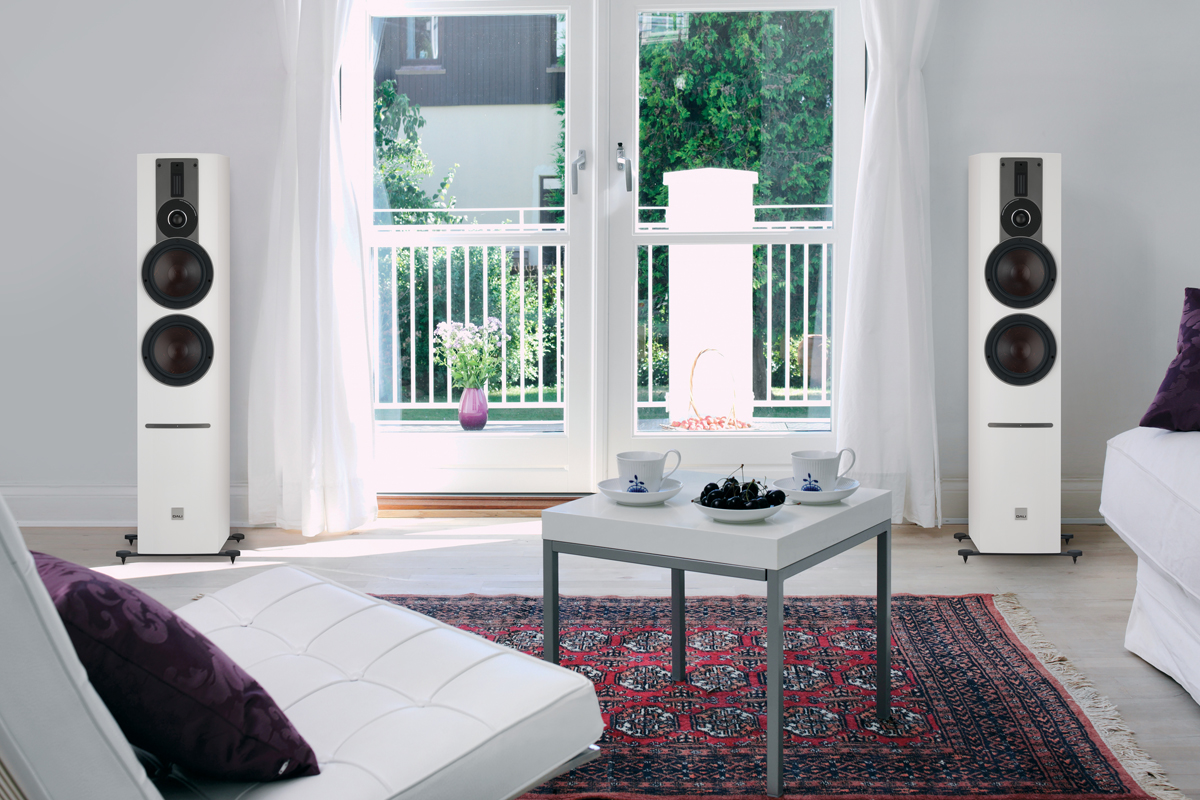
I’ve reviewed several active speakers that can work with optional wireless transmitters. In addition to Buchardt’s A500, these include DALI’s Callisto 2 C stand-mount ($3499/pair) and Rubicon 6 C floorstander ($7999/pair, shown above); and System Audio’s Legend 5 Silverback ($2849/pair, including shipping and taxes). The transmitters have input jacks for external components (though none has a phono stage). DALI’s active speakers work with the optional Sound Hub ($799), which has a slot for a BluOS streamer module ($449). Buchardt’s and SA’s wireless active speakers can work with any Wireless Speaker & Audio (WiSA) transmitter. These wireless systems make for a very clean installation -- the only visible wires will be the power cords running to the two speakers. They also permit more flexibility in speaker placement, because no cables tether the speakers to other gear.
Some active speakers have built-in Wi-Fi and streaming capability, and client software for major streaming services. Examples include SVS’s Prime Wireless ($599/pair, shown below) and KEF’s LS50 Wireless II. The LS50 Wireless II supports the new Tidal Connect feature, which, much like Spotify Connect, allows users to stream to compatible devices from within the Tidal desktop and mobile apps. These two products illustrate a possible downside to this all-in-one simplicity: If everything is integrated into your speakers, and new developments like Tidal Connect emerge, your upgrade options will depend on whether -- and how quickly -- the speaker maker issues a software upgrade for your model.

Wasn’t that simple?
There’s no doubt that powered and active speakers make possible very streamlined system layouts that are perfect for Simplifi’d hi-fi. But there’s a flip side: choosing powered and active speakers can be complicated, because you’re making several decisions at once. You’re not just choosing speakers, but also amplification, and maybe source components as well. And while DSP-enabled features will make it easier to adapt your system’s sound to your listening space, they’re additional factors to consider in your decision.
Hopefully, this discussion will help you figure out what to look for. If you want to find the right answers, or the right components, you need to ask the right questions.
. . . Gordon Brockhouse



